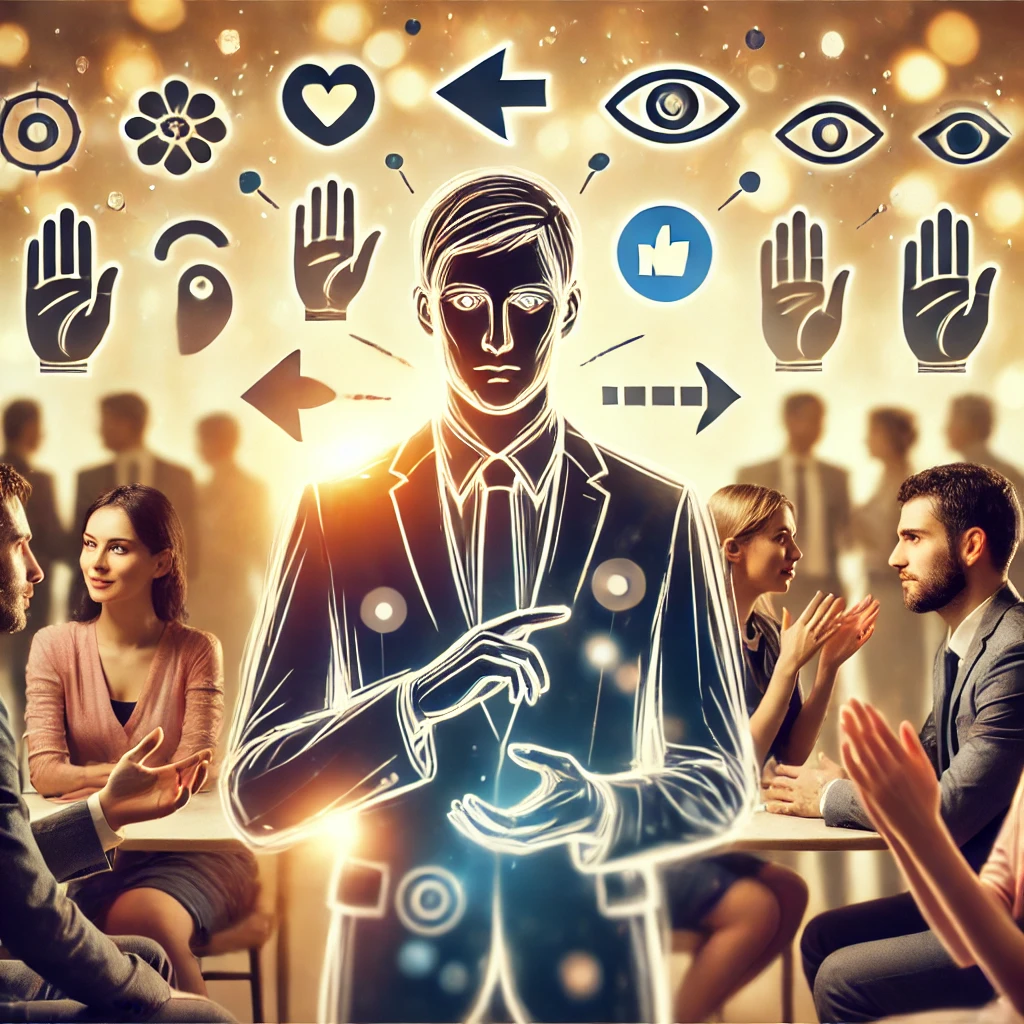The Secret Language of Body Language -- How to Read People Like a Book (and Appear More Confident)
The Secret Language of Body Language: How to Read People Like a Book (and Appear More Confident)
Have you ever felt like you’re missing something in your conversations? People seem closed off, conversations fizzle out, or you leave interactions feeling confused about the other person’s true feelings. The truth is, there’s a whole conversation happening beyond words: the silent language of body language.
Just like spoken language, body language conveys a wealth of information about a person’s emotions, intentions, and receptiveness. By learning to “read” these nonverbal cues, you can become a master decoder of human interaction. This not only helps you understand others better, but also allows you to project confidence and influence the flow of conversations.

Decoding the Body: A Crash Course in Nonverbal Communication
Our bodies are constantly sending signals, and becoming attuned to them is the key to unlocking the secrets of body language. Let’s explore some key areas to focus on:
-
The Mighty Eyes: Eyes are often called the “windows to the soul,” and for good reason. Direct eye contact conveys confidence and interest. However, prolonged staring can be seen as aggressive. Look away briefly to show you’re listening and avoid appearing intimidating. Shifty eyes, on the other hand, can suggest nervousness or dishonesty. Pay attention to pupil dilation – dilated pupils often indicate interest or attraction.
-
The Talkative Torso: Our posture speaks volumes. Good posture with broad shoulders and a lifted head projects confidence and openness. Slouching conveys disinterest or boredom. Leaning forward shows you’re engaged in the conversation, while leaning back can indicate aloofness. Crossing your arms can be a physical barrier, suggesting defensiveness or a closed-off attitude. An open posture with uncrossed arms invites conversation and makes you appear approachable.
-
The Chatty Hands: Hands are incredibly expressive. Steepling fingers might suggest authority or evaluation, while open palms convey honesty and openness. Fidgeting with your hands or objects can indicate nervousness or boredom. Mirroring someone’s hand gestures (subtly, of course!) can build rapport and establish a sense of connection.
-
The Restless Legs: Crossed legs can be a barrier, but the direction of the crossed ankle can be telling. An ankle crossed towards the other person suggests interest, while an ankle crossed away might indicate discomfort or a desire to leave. Tapping your foot or jiggling your leg shows impatience or nervousness. Maintaining relaxed, uncrossed legs conveys calmness and attentiveness.
Beyond the Basics: Advanced Body Language
Understanding the basics is a great start, but body language can be nuanced and context-dependent. Here are some additional tips to become a body language pro:
-
Consider the Context: The same gesture can have different meanings in different situations. For example, crossed arms during a negotiation might indicate defensiveness, while crossed arms during a cold day could simply mean someone is trying to stay warm. Read body language signals in context with the situation and verbal communication.
-
Cluster Cues, Not Solo Acts: Don’t interpret a single gesture in isolation. Look for clusters of nonverbal cues to get a more accurate picture. For example, furrowed brows combined with crossed arms likely indicate frustration, while furrowed brows with a furrowed nose might suggest confusion.
-
Be Aware of Cultural Differences: Body language can vary greatly across cultures. A thumbs-up might be considered rude in some cultures, while a direct gaze might be seen as disrespectful in others. Be mindful of cultural norms to avoid misinterpreting signals.
Projecting Confidence: How Body Language Can Make You a Social Rockstar**
Now that you’re equipped to decode body language, let’s use this knowledge to your advantage! Here are some ways you can leverage body language to appear more confident and approachable:
-
Maintain Open Posture: Stand tall with your shoulders back and head held high. Uncross your arms and keep your torso facing the person you’re talking to. This open posture projects confidence and invites interaction.
-
Make Eye Contact: Direct eye contact shows interest and engagement. However, don’t stare – make eye contact for a few seconds, then look away briefly. This demonstrates attentiveness without being intimidating.
-
Mirror Subtly: Subtly mirroring the other person’s body language can build rapport and create a sense of connection. Don’t be a copycat, but subtly echo their hand gestures or posture to establish a subconscious sense of trust.
-
Smile (Genuinely): A genuine smile is a powerful tool. It conveys warmth, approachability, and puts people at ease. However, a forced smile can appear fake or insincere.
You too can learn and master these skills.